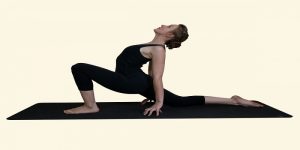The aim of Yoga is Self-realization and the attainment of Moksha. Yoga was an integral part of the Indus Valley civilisation – dating back to 2700 B.C., and is now making a comeback, by attaining popularity through video channels, popular gurus and award-winning self-help books. Yoga works as a therapy for health and fitness, and though physical health is natural consequences of yoga, the goal of yoga is more far-reaching.
The science of yoga has its origin thousands of years ago, and tantric tales portray Shiva as the first yogi or Adiyogi who poured his profound knowledge into the Saptarishis (seven sages). The sages travelled to different parts of the world, including Asia, the Middle East, and South America and spread their knowledge. Agastya was the Saptarishi who travelled across India and is widely regarded as being the man who crafted the basic framework around which Yoga tradition is now practiced in India.
Some seals and fossil remains found in and around Mohenjadaro prove the existence of Yoga through its depiction of figures performing Yoga. The Bhavad Gita and Upanishads too have a lot of references to Yoga and even explains the concepts of Gyan, Bhakti and Karma Yoga. Maharshi Patanjali systematised and codified the then existing practices of Yoga, its meaning and its related knowledge through his Yoga Sutras and in the process, started the Classical Period in Yoga history.

Natha Yogis like Matsyendaranatha, Gorkshanatha and Shrinivasa Bhatt are some of the great personalities who popularized the Hatha Yoga practices during 500-1500 A.D. Hatha yoga is a preparatory process that allows your body to sustain and utilize higher levels of energy and hence begins with the body, and then moves onto the breath and finally, the mind.
A few centuries after Patanjali, yoga masters created a system to rejuvenate the body and prolong life and gave Yoga a more physical aspect to it and thus gave roots to Tantric Yoga which aims to cleanse the body and mind through physical exercises. Such explorations led to the creation of Hatha Yoga.
In the late 1800s and early 1900s, yoga masters began to travel to the West beginning with Swami Vivekananda who wowed people with his lectures on yoga. In the 1920s and 30s, Hatha Yoga was strongly promoted in India in the 1920s due to the efforts T. Krishnamacharya and Swami Sivananda who founded the first Hatha Yoga school in Mysore in 1924 and the Divine Life Society respectively. Krishnamacharya mentored B.K.S. Iyengar, T.K.V. Desikachar and Pattabhi Jois who in their own right helped spread awareness on Hatha Yoga.
Paramahansa Yogananda arrived in Boston in 1920 and later established the Self-Realizaton Fellowship, based in Los Angeles. His Autobiography of a Yogi has become a reference book for several Yoga practicioners while Yogendra Mastamani demonstrated to Americans the power of Hatha Yoga.
Since the early 1930s, Jiddu Krishnamurti delighted thousands with his eloquent talks on Jnana-Yoga and had the likes of Aldous Huxley, Christopher Isherwood, Charles Chaplin, and Greta Garbo to call as disciples or friends.

Other renowned modern Yoga adepts are Sri Aurobindo (Integral Yoga), Ramana Maharshi (Jnana-Yoga), Swami Nityananda (Siddha-Yoga), and his disciple Swami Muktananda (Tantric Yoga).
On a more modern note, the Dalai Lama is one of the great yogis of modern Tibet, who, above all, demonstrates that the principles of Yoga can lead to peace of mind and longevity.
Though traditionally, knowledge about Yoga practices was imparted by experienced, and wise persons in the families and later by Rishis/Munis/Acharyas in Ashramas while in the modern world, Yoga Therapy has become a part of the curriculum in various Yoga Universites, Yoga Departments in the Universities, Naturopathy colleges and Private trusts and societies.
Something as simple as the invention of the rubber yoga mat has affected Yoga tradition by changing several asanas and the way they are practiced. With the advent of mass media, books and publication, things changed drastically. Noted authors and yoga therapists published books that outlined the benefits of Yoga which gave it a wider acceptance. With the advent of the internet , things changed even more drastically. There are several Youtubers who have channels dedicated to Yoga and modern exponents of Yoga whether it be Baba Ramdev or Adriene, have gained popularity through such avenues.
Nowadays, millions and millions of people across the globe benefit from Yoga which has evolved, adapted and has been promoted by several eminent Yoga masters leading to a delightful amalgamation of practices and traditions. Thus Yoga is blossoming, and growing more vibrant every day.































